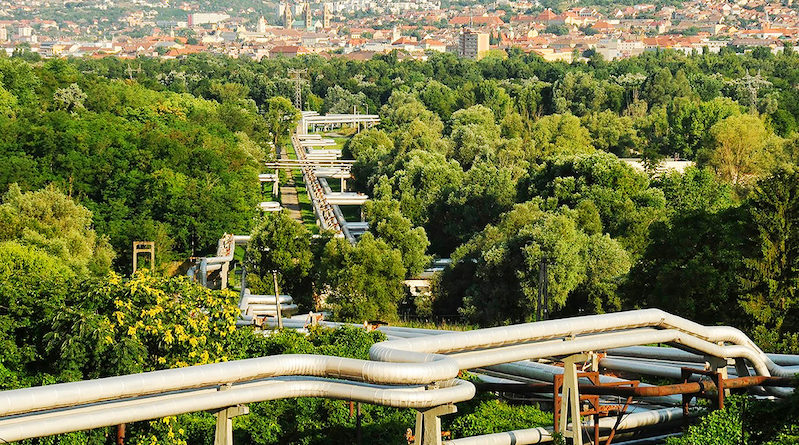
Decarbonising Finance or Decarbonising the Real Economy?
In May 2018, the European Commission launched a series of legislative proposals aiming at greening the European economy by shifting capital investment towards climate and environment-friendly activities.
Although Veolia welcomes these regulatory initiatives that will enhance clarity and transparency over the actual sustainability of portfolios’ underlying assets, I believe the heart of the problem will unfortunately remain unchanged. Of course, money is the sinews of war. However, speaking as a former CFO myself, I am afraid greening financial assets does not mean greening the real economy.
speaking as a former CFO myself, I am afraid greening financial assets does not mean greening the real economy…
There is a Chinese proverb that says: “When the sage points at the moon, the fool looks at his finger.” I fear that these proposals will not tackle the issue at source. Financial assets considered as unsustainable (e.g. coal, mining, nuclear, etc.) will simply be managed by other investment funds that couldn’t care less about the environment. This will create a parallel “brown” hidden economy instead of incentivising these businesses to make investments in order to reduce their overall carbon footprint. Moreover, let’s not forget that a large majority of companies are not publicly listed on the stock market which means most of European companies get financed through alternative investments like private equity.
Fostering harmonised standards
While a plethora of voluntary green financial schemes have emerged over the last few years, the lack of harmonised standards of these initiatives has triggered rightful concerns on their actual positive impacts. The three interlinked texts proposed by the Commission can contribute to change that, by providing greater assurance to both individual and institutional investors so that they do not fall in the fool’s trap of greenwashing.
These proposals will also incentivise listed companies to make strategic decisions in line with sustainable growth as they will have to disclose precisely in their annual reports the shift that they are undertaking to meet the targets.
Classifying fifty shades of green
The establishment of a classification of economic activities that can make a real contribution to climate change mitigation or adaptation the so-called taxonomy will encourage businesses to move towards greater sustainability. The taxonomy proposed by the Technical Expert Group is quite comprehensive and covers all the different shades of green.
These proposals will boost the demand for state-of-the-art circular economy solutions, which is great for companies like Veolia, the global leader in optimised resource management. Our clients will indeed be keener on investing in energy efficiency solutions, recovering their waste and improving their water usage with the right financial incentives in place.
Our clients will indeed be keener on investing in energy efficiency solutions, recovering their waste and improving their water usage with the right financial incentives in place.
To achieve its objectives, the action plan on sustainable finance should however be result-oriented.
Facilitating the reporting process
The greatest challenge for a global multi- activity company like Veolia is to minimise the administrative burden associated with non-financial corporate reporting conducted on a large number of sites Veolia operates over 8,000 sites across the world. The EU should not impose reporting for the sake of reporting, but in the aim of encouraging companies to take concrete action. Considerable expertise and resources will be needed to collect adequate information from the local level. Therefore, the implementation of the action plan should strive to limit the costs of data collection and communication as much as possible and follow the subsidiarity principle when needed.
Optimising water use and reuse
Climate change, population growth, and economic development have a direct impact on water availability. In times of growing water scarcity, freshwater is too precious to be used only once. Reusing treated wastewater can therefore be a valuable option for various water uses in areas where water is limited. After adequate treatment, waste water can be reused for agricultural irrigation, cooling systems, boilers, process water, cleaning or aquifer recharge.
Yet, despite its positive impacts on climate change adaptation, circular economy and water preservation (three of the six overarching environmental objectives of the action plan for sustainable finance), water recycling is an overlooked solution in the European regulatory landscape. Introducing it in the taxonomy would therefore send a positive signal.
Implementing the waste hierarchy
While the EU should, above all, incentivise reducing waste generation, standards should be harmonised at EU level to stimulate eco-conception and the material recovery of waste, as well as the financing of energy plants for waste that cannot be recycled. Indeed, local energy loops contribute both to circular economy and energy independence. Converting waste into power and simultaneously heat or steam is energy and cost-effective. It is also a better solution to match our energy needs than extracting, transporting and transforming fossil fuels from politically unstable regions. In this regard, waste-to-energy plants should be included in the scope of the taxonomy.
In general, activities that aim at decarbonising assets that would otherwise pollute more should be incentivised, such as the greening of district heating that used to be fuelled with fossil fuels (see example of Pécs).
Boosting water and (indoor) air quality
According to the Commission’s plans, pollution reduction should be specifically addressed in the taxonomy in the years to come. Through its time-tested expertise in water management, Veolia is able to inform on the highest achievable standards in water quality – starting with the treatment of heavy pollutants at source.
In parallel, the taxonomy can help reduce the deadly effects of air pollution, by encouraging energy efficiency measures as well as modelisation and control of airborne pollutants. In particular, considering that Europeans spend on average 80% of their time in confined spaces, indoor air quality should be taken into account in the legislative work to come, all the more as it has not yet been subject to any self-standing EU legislation.
Shaping green finance collectively
A refined financial system channelling investments into sustainable activities will provide impetus to mitigate climate change, adapt to its consequences, reduce pressure on ecosystems, tackle pollution, preserve water resources and minimise waste. The task of the future Platform for Sustainable Finance – which should take over the Technical Experts Group’s work by addressing these four last environmental objectives – thus promises to be both immense and essential.
Participation of all relevant stakeholders, including industries, will be necessary to make sure that no sustainable activity is left in a blind spot. Companies like Veolia that provide environmental services will remain fully invested in this process.
Veolia’s “Raison d’être”
Veolia’s purpose is to contribute to human progress by firmly committing to the UN Sustainable Development Goals to achieve a better and more sustainable future for all. It is with this aim in mind that Veolia sets itself the task of “Resourcing the world” through its environmental services business. At Veolia, we are convinced that continuing human development is only possible if economic, social and environmental issues are addressed as an indivisible whole.
At Veolia, we are convinced that continuing human development is only possible if economic, social and environmental issues are addressed as an indivisible whole.
Improvement of our environmental footprint and that of our customers is central to our business and its economic model. Our company’s objective is to bring benefits to all our stakeholders including customers, suppliers, employees, and shareholders.
Veolia already reports annually on its multi- dimensional performance through a dashboard with relevant indicators on the sustainability of its model. These indicators are used to assess not only economic and financial performance, but also environmental and social performance as well as customer satis- faction, ethics and compliance.




